SHTFDad may collect a share of sales or other compensation from the links on this page.
Surely you have heard such a word as bushcraft at least once. But if you have no interest in this topic, you are unlikely to know what it is. So, bushcraft is the art of living in harmony with nature.
Here, you will rely on ingenuity and resourcefulness. It will help you survive and thrive in the wilderness. Basic bushcraft skills go beyond just survival instinct. It encompasses a wide range of techniques.
From building shelters to foraging for food and more. All of these are bushcraft skills. If you delve deeper into history, you’ll be crafting armies for modern adventurers. It bestows the ability to navigate the outdoors confidently.
20 Bushcraft Skills for Preppers
Whether you’re an avid hiker, an experienced backpacker, or a novice wilderness enthusiast, our article is your path to mastering these time-tested skills that will allow you to enter the wilderness with respect, expertise, and a deep connection to nature.
Get ready, and come with us on this transformative journey. Discover the secrets of bushcraft by becoming one with the untouched wilderness.
1. Firecraft

Making fire is one of the most basic and primitive bushcraft skills. Fire is a vital element in survival situations. It will provide you with warmth, light, protection, and the ability to cook food.
Mastery of fire allows you to harness this primitive power from natural resources. You can use it even without modern tools such as matches or lighters.
First, you need to determine a suitable place for the fire. Preferably, choose one protected from the wind and safe from flammable materials.
Next, you must gather dry grass, leaves, or small twigs. As the fire grows, you will add larger and larger logs to the fire.
Some people worry that they will not be able to learn how to start a fire with bushcraft skills. But don’t worry. You can use several methods, such as stones, flint, or steel. Each method requires practice and patience.
Master the skill of making fire. It is how you will gain a deep connection to the primal essence of survival. You will be able to cultivate confidence and respect for the natural elements.
2. Shelter Building
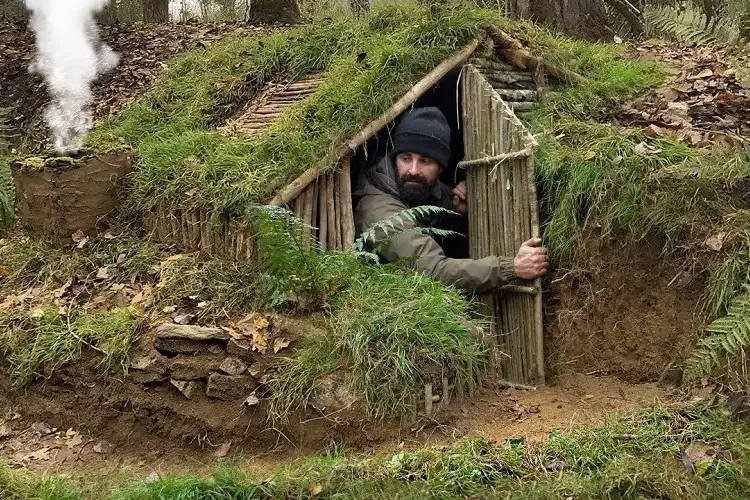
Shelter building is one of the core bushcraft skills courses. You need to learn how to build a temporary or semi-permanent structure.
Mastering this skill will help you survive in unfavorable weather conditions. It will provide safety and comfort during an outdoor expedition.
The first step in building a shelter is to choose a suitable location. You should avoid places that are prone to flooding, falling rocks, or other hazards.
You can use natural features for additional protection. For example, build a shelter under a canopy of trees or rock formations.
Next, in bushcraft skills, we recommend gathering materials. Take branches, leaves, grass, and so on. The goal is to build a structure that will insulate against the wind.
The most common shelter types are lean-tos, debris huts, and A-frame shelters. You can use a sturdy branch as a shelter. You can use a frame of branches covered with leaves and foliage as a tent.
A-frame shelters you can build by stapling two branches together Add a cross beam to it, and together, they form an “A” shape.
Building a shelter requires a combination of different approaches. Creativity, practicality, and knowledge of natural materials are important.
Understanding the environment and resources is key to an effective and reliable shelter. It will allow Kraft Shower lovers to live in December and create a connection with it.
3. Water Sourcing and Purification
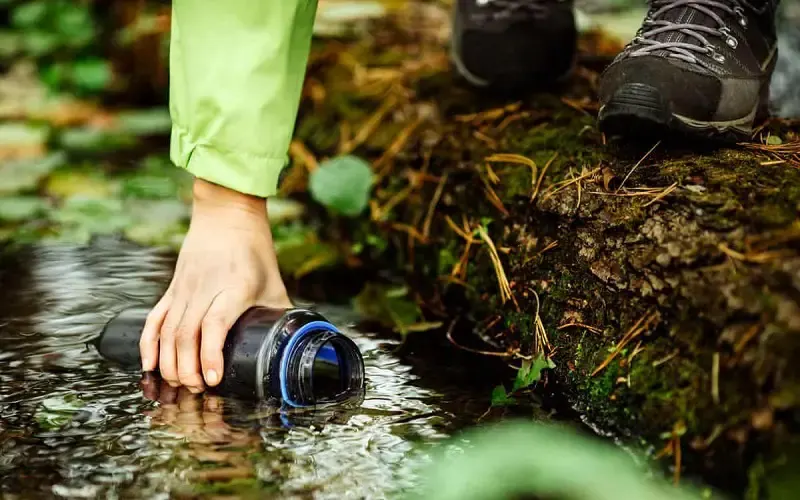
Finding and purifying water is an essential and basic bushcraft skill. They help you find and prepare water suitable for drinking.
Access to clean water is crucial for survival. Contaminated water can lead to disease and dehydration. To start, you need to learn how to identify potential water sources.
These can be streams, rivers, lakes, and natural springs. Signs of animal activity or lush vegetation can indicate the presence of water.
Once you have found a water source, you need to purify the water. One of the most effective methods recommended in a bushcraft skills course is boiling.
You can kill most bacteria, viruses, and parasites by heating water to a boil for at least 1 minute. Another method of purification is to use water filters.
These can also be tablets to remove or neutralize contaminants. You can find different filtration systems. These can range from portable pump filters to simple fabric filters.
Without filtration facilities, you can rustle up a solar panel. To do this, you need to dig a hole in the ground.
Put a container in the center and cover it with polyethylene. This way, you will have the opportunity to collect condensate. Master the skills of finding and purifying water.
In this way, Bushcraft fans can provide themselves with a reliable and safe water supply. It will enable you to confidently survive and thrive in the wilderness.
4. Knot Tying
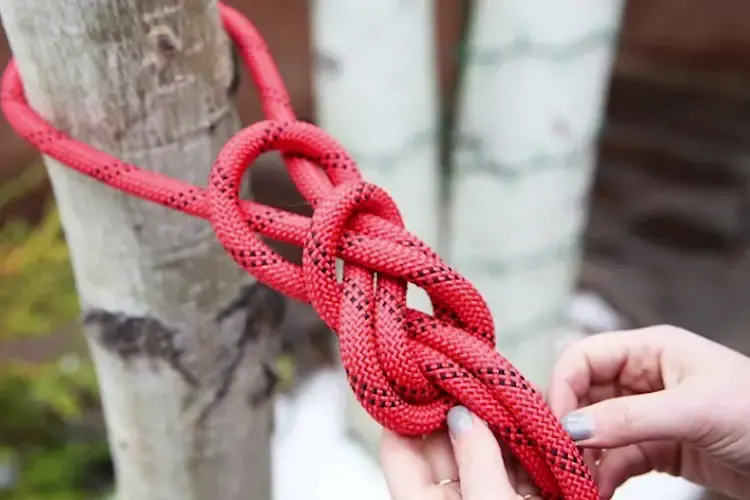
Tying services are bushcraft skills that you can easily learn and master. The idea is that you create secure and safe knots on ropes or cords.
These knots serve a variety of purposes in the wilderness. For example, you can use them to build a shelter or secure gear.
There are numerous knots to learn, each with its own unique application. The square knot, or reef knot, is a basic knot for joining two ropes of equal diameter.
It’s useful for securing bundles and tying non-critical knots. The clove hitch attaches ropes to trees or other cylindrical objects. The taut-line hitch is perfect for adjusting the tension of a line.
For more permanent and robust connections, the bowline knot is essential. It creates a secure loop that does not slip or jam when tensioned.
It allows it to create rescue loops or secure the rope at the anchor point. Want to learn how to knit primitive and easy knots using bushcraft skills?
Then we recommend that you practice beforehand. You need to familiarize yourself with the advantages and disadvantages of each.
It is very important to understand in advance when you should use a particular knot. After all, it all depends on specific scenarios and requirements.
In the world of bushcraft, knot tying is a valuable skill. It enhances safety, performance, and creativity in a variety of activities. It promotes the mastery of survival skills and wilderness exploration.
5. Foraging for Edible Plants
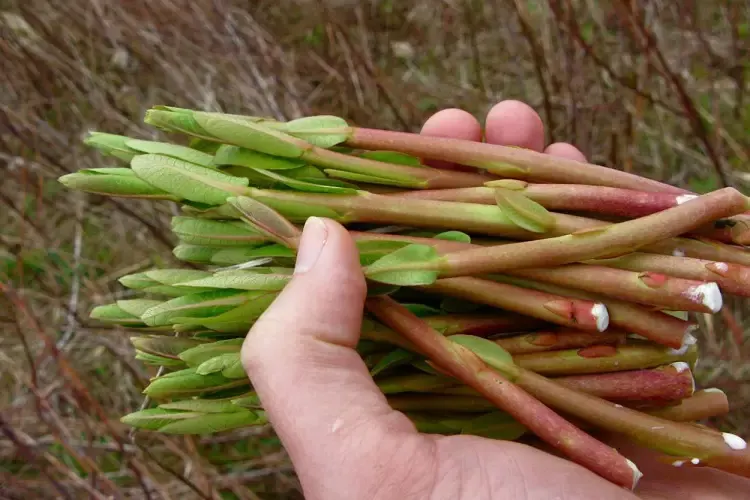
Collecting edible plants is another extremely important bushcraft skill. You must learn to identify and collect safe wild edible plants. You may encounter them in the wilderness.
You need this skill to replenish your food supply while camping in the wilderness. Or you can use them in survival situations when your normal food sources have run out.
Do you want to get started in gathering? Then you need to gain knowledge of the local flora. You need to learn how to distinguish edible plants from poisonous ones.
Reference books and suggestions for identifying plants can help you with this. You can also get experience from experienced collectors. It is important to respect the environment.
We recommend that you collect plants only in a sustainable way. Take only what you need. Leave enough for the ecosystem to thrive.
Before consuming any plant, make sure it is safe. Some edible plants can have poisonous counterparts. Therefore, you need to know them well and exercise caution.
Foraging for edible plants introduces individuals to the abundance of resources nature offers.
Mastering these basic bushcraft skills increases self-sufficiency. You will be able to protect yourself from the dangers of poison and allow wildlife to thrive.
6. Hunting and Trapping
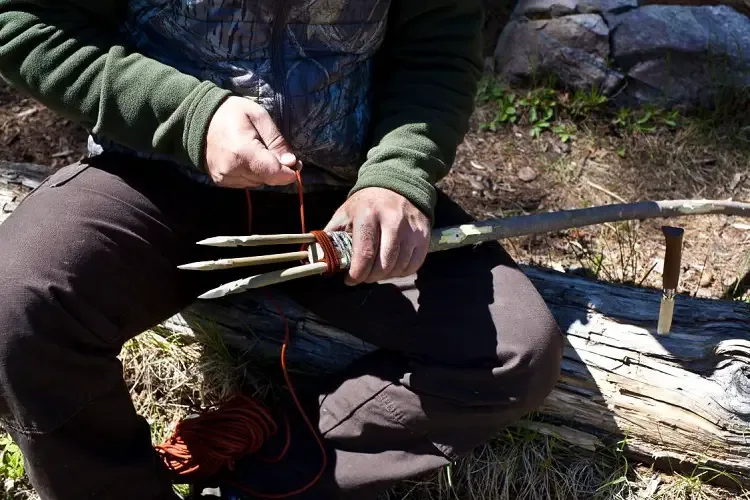
Hunting and trapping are also important skills to learn while learning bushcraft. It will allow you to obtain food in the wilderness through the words of animals.
Human civilizations have honed these skills for thousands of years. And they are still valuable for survival, which I provide in the wilderness.
Hunting usually involves the use of a variety of tools. You can use a bow, a spear arrow, or a gun. It requires stealth, knowledge of animal behavior, and marksmanship.
Hunting provides a direct source of fresh meat, a valuable protein source, and an energy source. Trapping, conversely, is a method of capturing animals using snares, traps, and deadfalls.
This skill demands an understanding of animal tracks, habitats, and behavior. Trapping can be an effective way to collect food while passively conserving energy.
Hunting and trapping require ethical behavior. You must comply with local laws and regulations. The bushcraft skills course teaches that it is important to prioritize conservation.
Therefore, you can only harvest species that are not endangered. Mastering these skills enhances your ability to survive in the wild for long periods of time.
It fosters a deeper connection with nature. You will be able to understand the delicate balance between human needs and ecosystem conservation.
7. Navigation
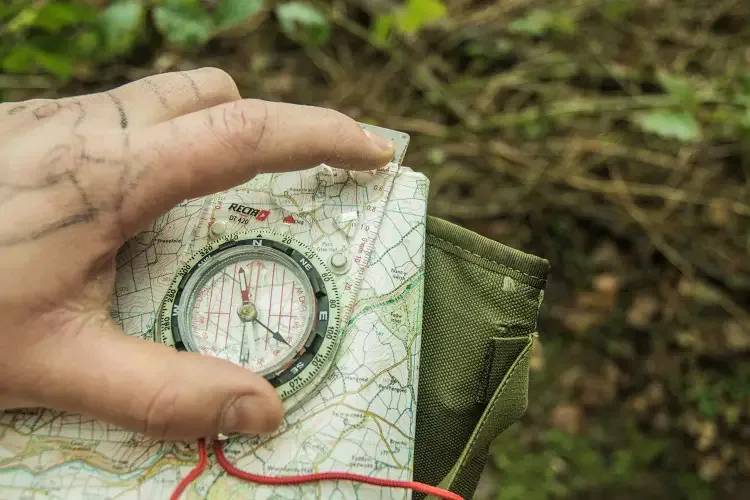
Navigation is one of the most important yet primitive bushcraft skills. It allows you to determine your location and direction of travel in the wilderness.
This way, you can ensure safe, efficient movement through unfamiliar terrain. Experienced navigator relies on natural elements and basic tools to find their way.
It fosters a deeper connection with the environment. To navigate effectively, you must know how to use a map and compass.
Maps provide valuable information about the landscape. They are landmarks, sources of water, and potential hazards.
A compass, on the other hand, helps you determine cardinal directions. You can plot courses and maintain a sense of direction.
You can also try celestial navigation. It involves observing the sun, moon, stars, and other celestial bodies. It helps you determine your direction of travel.
Natural navigation involves reading the signs of the environment. These skills help in determining direction even without modern instruments.
Mastering navigation allows hobbyists to learn bushcraft skills to navigate confidently in the wilderness. It reduces the risk of disorientation and loss of direction.
It increases confidence in your abilities and fosters a deeper understanding of nature. You will develop a sense of harmony and respect for its cues.
8. Wild Edible and Medicinal Plant Identification
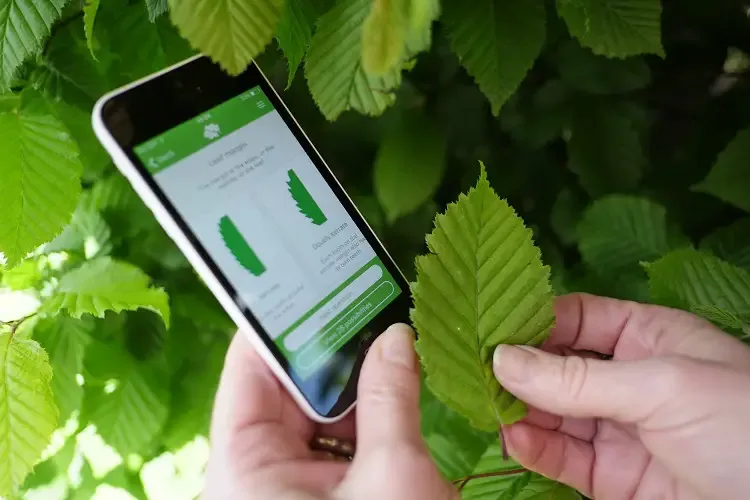
Identifying edible and medicinal plants is another useful bushcraft skill. It allows you to recognize the use of plants for sustenance and healing.
This method allows outdoor enthusiasts to mine the environment for nutritious foods and natural medicines. By doing so, you will increase your self-sufficiency and survivability.
Do you want to master this skill? Then you need to learn how to properly identify different plants. You can use field guides or a plant identification app.
Some experienced collectors and herbalists can be valuable sources of information too. They can tell you about different plants and their properties.
Edible plants contain valuable nutrients, vitamins, and minerals. They can supplement your diet during outdoor recreation or survival. To them, we can add children’s berries, edible herbs, nuts, and roots.
People have used medicinal plants for centuries to treat various diseases or injuries. Knowledge of these plants allows us to create natural remedies for pain relief.
They can also promote wound healing and address common health problems. However, you need to exercise caution.
Some plants may have toxic parts or interact with certain people. Proper research and understanding are important for you to collect safely and responsibly.
9. Campsite Selection
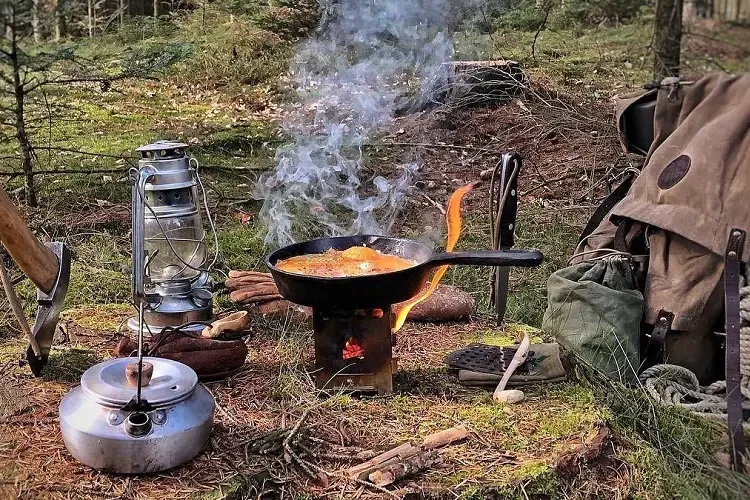
Campsite selection is a basic bushcraft skill. It involves choosing the best place to set up camp in the wilderness.
A well-chosen campsite ensures safety, comfort, and minimal impact on the surrounding environment. When selecting a campsite, it’s essential to consider several factors.
First of all, you need to ensure safety. You need to avoid places that are prone to natural disasters. Look for flat and level ground to ensure a comfortable sleeping surface.
Water availability is crucial, so camp near a reliable water source like a stream or river. However, maintain a safe distance to prevent contamination and potential flash floods.
Choose a site away from animal trails and game-rich areas. This way, you can avoid unwanted visitors during the night.
Likewise, avoid fragile ecosystems like meadows and sensitive habitats to minimize environmental impact. Consider the prevailing winds and weather conditions.
Set up camp near natural wind-protected structures. These can be large rocks or trees that provide shelter from strong gusts. Build the campfire and enjoy the wilderness.
When choosing a camping site, you should be guided by the principle of leaving no trace. This way, you will not disturb the flora and fauna. You will leave the area in pristine condition.
Hone your camping skills. The bushcraft skills course will help you create a harmonious relationship with nature.
You will be able to provide a safe and enjoyable Vacation in nature. In doing so, you will preserve the beauty of the wilderness for future generations.
10. Knife Skills
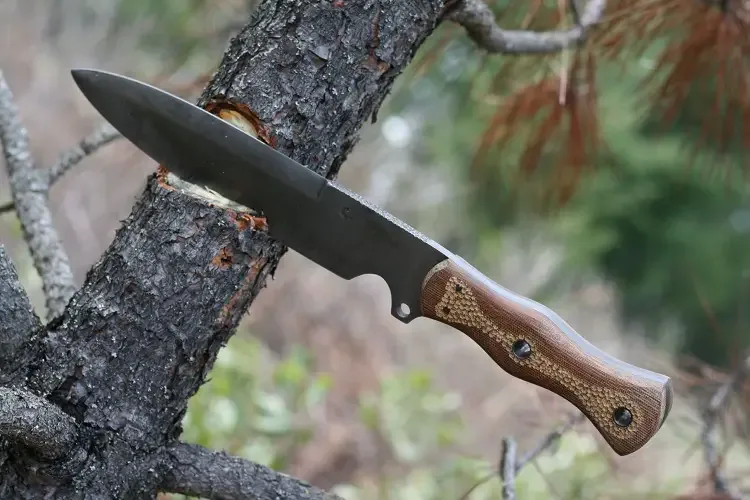
Knife skills will not be out of place while learning bushcraft skills. It also includes the safe and skillful use of a knife.
This way, you can tackle various tasks in the wilderness. The right knife is a versatile tool. It helps you survive, build shelters, prepare food, and craft.
The first aspect of knife mastery is keeping the blade sharp. You can do this through regular sharpening. A sharp knife is safer and more effective for cutting tasks.
Next, learning different cutting techniques is essential. These include the thumb grip, which rests on the knife’s spine for precise control. And we can also include the chest lever grip for heavier cutting tasks.
Primitive bushcraft enthusiasts also learn safety techniques when working with a knife. They understand the importance of holding the knife securely to avoid accidents.
An experienced bush crafter can use their knife for carving, notching, scraping, and so on. You can hone your knife skills with practice and experience.
It leads to increased efficiency and skill in handling this essential tool. Mastering these skills increases confidence in your abilities and capabilities.
It contributes to a successful and rewarding outdoor experience.
11. Cordage-Making
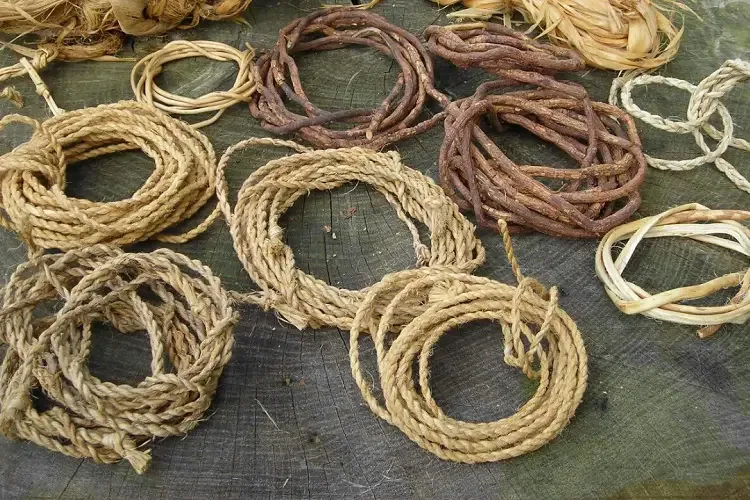
Cordage-making is another bushcraft skill. It involves creating strong and durable ropes or cords from natural materials.
These ropes serve a variety of purposes. For example, you can use them to build shelters, traps, etc.
To make cordage, the bushcraft skills course gathers suitable fibrous plant materials. For example, this can be tree bark, plant stems, grass, or vines.
These materials must then be subjected to processing methods. These are skinning, pounding, or soaking. This way, you can release the strong fibers they contain.
After extraction, you can twist or weave the fibers together. It is how you can form a continuous cord. You have compacted the fibers by twisting or braiding them to form a strong and reliable rope.
Different plant materials provide varying degrees of strength and flexibility to the cord. The way you process them also affects strength and flexibility.
Some fibers are more suitable for heavy-duty work. For example, you can use them to bind poles together when building shelters. Others you can use to make fishing lines or snares.
The craftsmanship of cord provides self-sufficiency in the wilderness. All because it is a renewable and readily available resource.
That said, it helps solve many problems. It demonstrates the ingenuity and resourcefulness of bushcrafters. It allows you to survive and adapt to the natural environment.
12. Basic First Aid
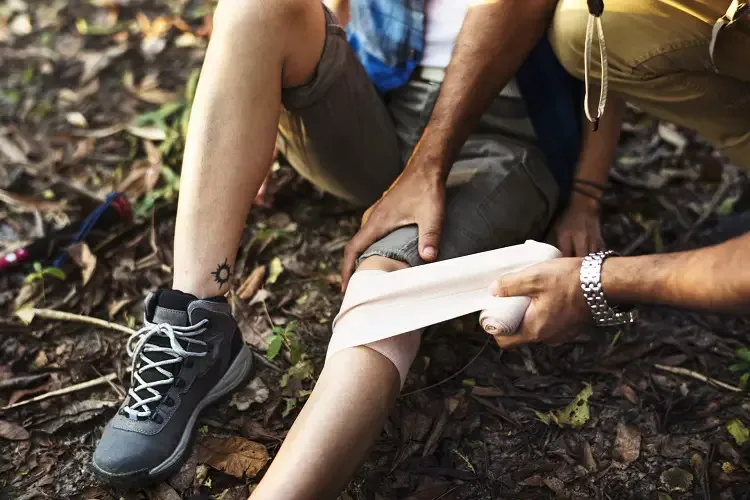
First aid is a basic skill for bushcraft and any other situation. With this knowledge, you can give immediate medical attention to yourself or others.
It is very important in the event of an injury or a medical emergency in the wilderness. Knowing the basics of administering medicine can save a life. It is essential for responsible outdoor recreation.
Mastering the basics of first aid gives you the ability to assess injuries. You will be able to identify a potentially serious condition.
Bushcraft enthusiasts should be able to treat minor wounds. And you should also be able to deal with burns, sprains, and insect bites.
Ideally, if you know how to deal with more serious injuries too, And that includes cuts that require stitches. And don’t forget about fractures or sprains.
The basic primitive bushcraft skills we can include are:
- Cleaning and dressing wounds
- Bandaging and splinting
- Immobilization of injured limbs
- Knowledge of cardiopulmonary resuscitation (CPR)
- Knowledge of CPR
Part of this skill is carrying a well-stocked first aid kit. You must be able to use its contents effectively. Remember to update your first-aid kit regularly.
Remember to also adapt your first aid kit to specific outdoor activities. Among bushcraft skills, first aid is essential. This knowledge will help you navigate the wilderness with confidence.
You will know that you can respond quickly and effectively to medical emergencies. In this way, you will ensure the safety and well-being of yourself and your companions.
13. Nature Awareness
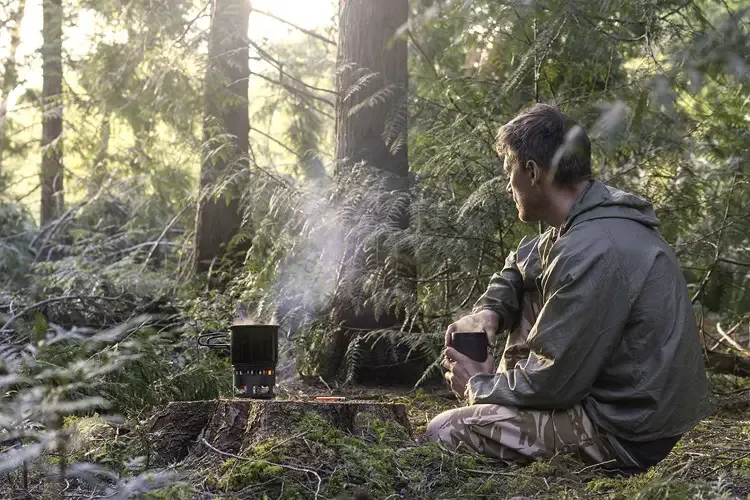
Bushcraft involves being in nature. Therefore, familiarizing yourself with nature is a very important bushcraft skill.
It goes beyond just observing the environment. It’s an increase in sensory sensitivity and intuition. It is a deep understanding of the intricacies of nature.
You can start by looking for animal tracks or recognizing bird calls. Then you can identify plants. You can also hone your skills at recognizing signs of changing weather.
By tuning in to nature’s signals, you can predict potential dangers. You’ll find it easier to locate water sources or identify edible medicinal plants.
Familiarizing yourself with nature improves your overall experience of nature.
This skill is not just about survival. It fosters respect for the natural world. You can maintain a balance between human activities and the harmony of nature.
14. Camouflage and Concealment
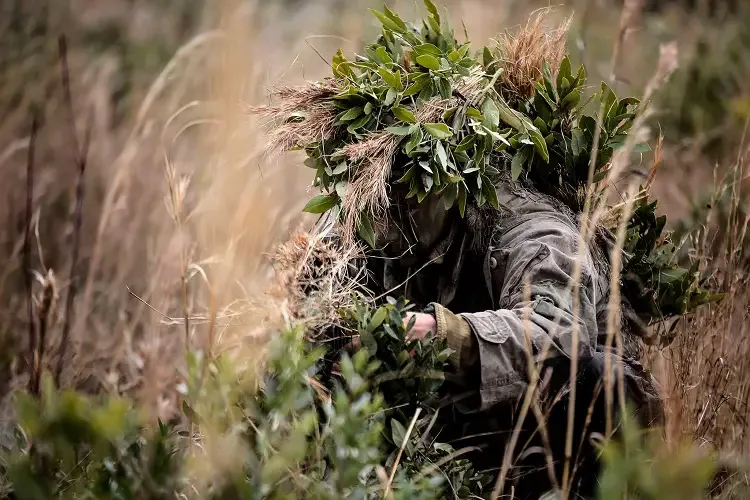
Camouflage is also a good skill to learn while learning bushcraft. These options allow you to get angry with the environment.
This way, you can avoid detection by wild animals or potential threats. These skills are especially important when hunting.
Camouflage is the art of changing your appearance to match your surroundings. You can reduce the likelihood of getting noticed. You can use natural materials to create camouflage.
You can use leaves, branches, and even dirt. It helps you blend in seamlessly with your surroundings. You will remain unnoticed by animals and enemies.
Camouflage involves choosing strategic locations. These are places that will provide you with cover and camouflage.
For example, you can hide behind rocks, trees, or foliage. These break a person up and make it difficult to spot from a distance.
Camouflage and mastering it allow you to become part of nature. It will increase your chances of successfully hunting or observing wildlife.
It will also provide a higher level of safety and survival in the wilderness.
15. Campfire Cooking
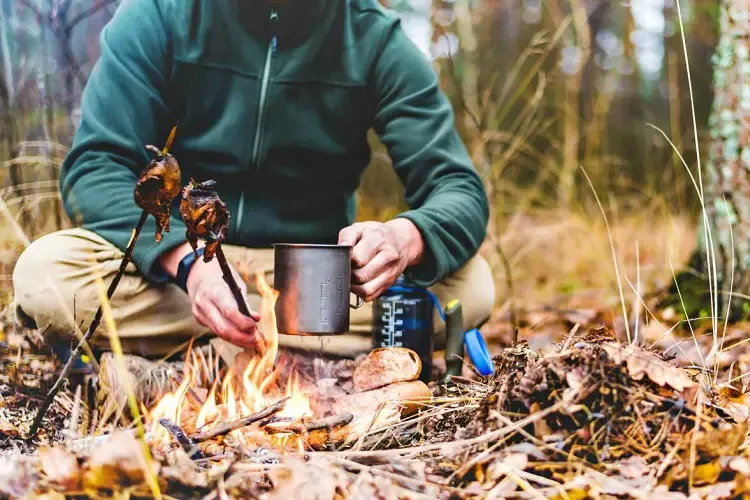
Cooking over a campfire is very tasty. Additionally, it is also a basic bushcraft skill. You can cook food in an open window in the wilderness.
It provides you with a delicious meal. It expands your outdoor recreational opportunities. You will immerse yourself in the basic process of cooking delicious food in the wild.
To start campfire cooking, one must first build a suitable fire. A well-constructed fire pit with a steady flame is essential for consistent cooking.
Next, you need to collect and prepare the ingredients. You can gather an edible plant, go fishing, or go hunting. These are all great sources of fresh, natural food.
Preparing the food may involve cleaning, gutting, and seasoning it. You can use skewers, a grill, or a skillet for flame cooking.
Also, remember to adjust the intensity of the fire and control the cooking time. This way, you can ensure the food is thoroughly and evenly fried.
Cooking over a campfire opens up many culinary opportunities for learning bushcraft skills. You can cook simple roasted vegetables and meats or more complex stews and baked goods.
Mastering campfire cooking is not only a great voice quencher. It deepens your connection with nature.
It allows for a more intimate and rewarding outdoor experience. It embraces self-sufficiency and resourcefulness.
16. Axeman Ship
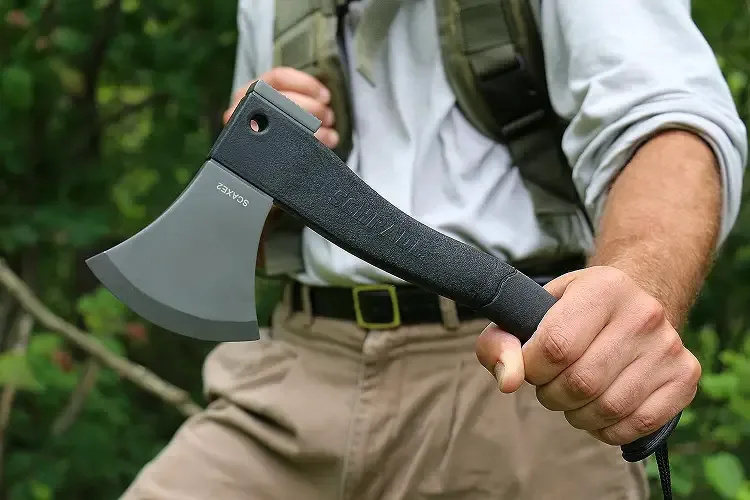
“Axeman ship” is a term that is not commonly used in the context of bushcraft or wilderness skills. However, you can use the term to describe the skillful and effective use of an axe.
When teaching bushcraft skills, the axe is a versatile tool. You can use it for many different tasks. You can use it to chop wood, fall trees, cut wood, and build a shelter.
“Axemanship” would thus be the mastery of using an axe effectively and safely. Do you want to master the axe? Then you need to know the proper techniques for handling it.
It includes knowing how to pick up the axe and control the swing. The execution of each blow is very important.
Safety is of paramount importance. Therefore, when working with an axe, you should always be aware of your surroundings. Be sure to avoid any hazards.
Efficiency is another aspect of the Axeman ship. Knowing the right angle and technique can save you energy. You will be able to achieve productive results.
Also, remember the regular maintenance of your axe. You need to sharpen it in time for it to work well and last longer.
Master these not-quite-primitive but very important bushcraft skills. Then you can efficiently make firewood, build sturdy shelters, and craft various items.
17. Wild Game Processing
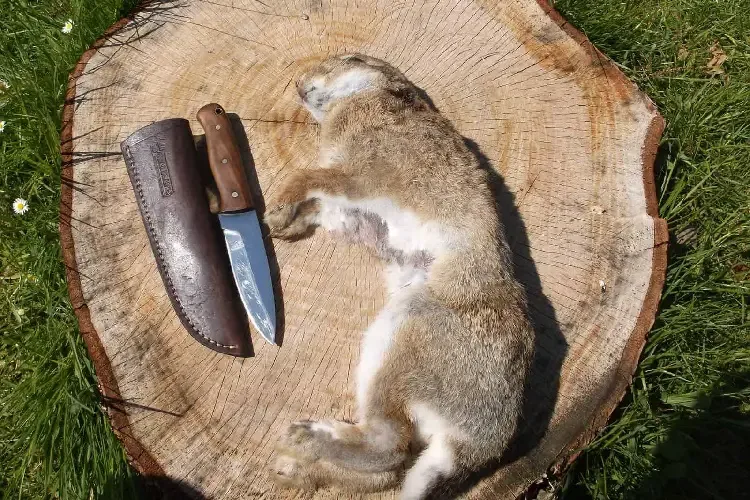
Processing games is no less important than bushcraft skills courses. It will allow you to turn the prey animal into edible meat and useful resources.
This skill is vital for hunters and survivalists. This way, you can utilize all parts of the animal efficiently. It will allow you to minimize the amount of waste in the wild.
You can start the process by cutting and removing the internal organs from the carcass. We recommend that you handle the meat carefully.
This way, you can avoid contaminating it. After cutting, you need to transport the animal to your base. There, you need to perform further processing.
To do this, skin, quarter, and cut the meat into portions suitable for cooking and canning.
When processing the game, you can also use other animal parts. For example, you can use bones to make tools and forgeries. You can use animal pelts to tan clothing or shelter materials.
Mastering game processing skills in basic bushcraft skills ensures that nothing goes to waste and demonstrates respect for the animal and a deeper appreciation of nature’s bounty.
It increases motor skills and survival abilities. It makes bushcrafters more resourceful and self-reliant in the wilderness.
18. Emergency Signaling
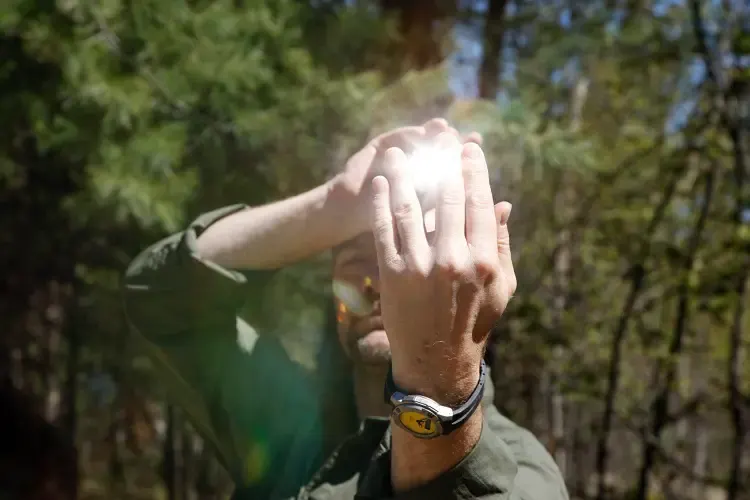
Emergency signaling is an extremely important bushcraft skill. It involves the use of various techniques and tools.
You can use them to attract attention and call for help in an emergency. There are several ways to signal for help. Each of them is suitable for different situations.
You can use visual signals that reflect the surface using mirrors or brightly colored clothing. You can also pay attention to audible signals.
These are common whistles, beeps, and even hits on an object. Smoke signals you can create with the help of a fire during the daytime
You can learn about international distress signals and emergency radio protocols. It is also ideal if you have access to radio or satellite communications.
Master distress signaling techniques among the basic bushcraft skills. This way, you will know that if you are in a dire situation, you will have the means to call for help.
It will increase your chances of being found and rescued quickly.
19. Hygiene and Sanitation
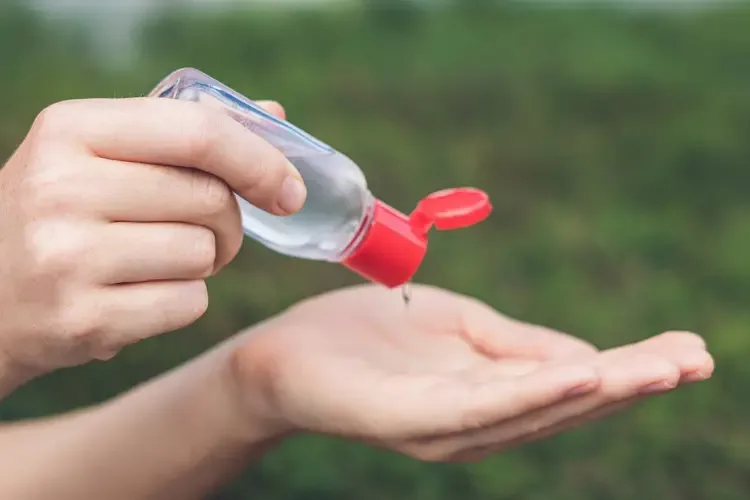
One of the last bushcraft skills is hygiene and sanitation. This cleanliness maintenance will help prevent disease spread in the wilderness.
You need to practice good hygiene in the wilderness. It is vital To ensure well-being and health.
The first thing you need to do to maintain hygiene practices is to wash your hands with soap and water. If you do not have soap, use hand sanitizer. As a last resort, you can make soap from natural materials.
Keeping things clean and tidy helps you avoid attracting pests. You will be able to minimize the risk of any diseases. Regular cleaning and sanitizing of kitchen utensils are also keys to safe cooking.
Personal hygiene is also important. It is ideal if you take all your personal hygiene products home.
Prioritize hygiene and sanitation in bushcraft. It is how a person enhances their health and well-being.
You will be able to reduce the risk of getting infections. Show respect for the environment and other outdoor enthusiasts.
20. Potable Water Procurement
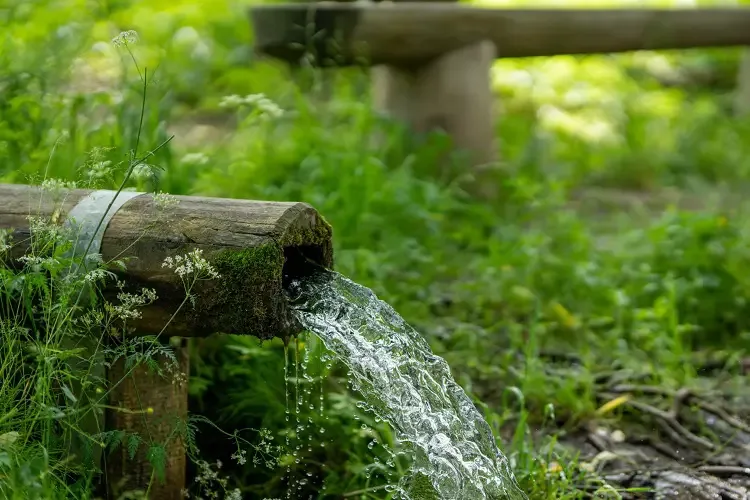
Collecting drinking water is another basic bushcraft skill. In the wilderness, access to clean drinking water is not always guaranteed. We recommend that you prepare for this in advance.
If you are too clean-minded, you can buy water in advance at the store. But if you haven’t or your supplies have already run out, we can help! Sure, you can get water from rivers, lakes, and so on.
But what if you don’t see any such sources nearby? Our first tip is to observe animals! Animals are usually the ones who can lead you to water sources. Most animals require water regularly.
For example, deer usually never go far from water. Therefore, we recommend that you look for tracks of grazing animals. Another good option is insects. Especially bees Because they are good indicators of water.
Bees very rarely go farther than four miles from their nests. So you will usually be able to find a water source within that range. Flies can be a good indicator, too, because they don’t fly farther than 100 meters from the water.
You can get water from plants. For example, vines or different roots are good sources of water. To do this, you must cut off a small piece, remove the bark, and suck the moisture from the roots.
These bushcraft skills will help you survive in the absence of water. Therefore, we recommend that you learn these survival rules.
Final Thoughts
In the world of bushcraft, mastering a variety of skills empowers a person to thrive and connect deeply with nature. Each skill increases self-confidence and the ability to survive.
The art of bushcraft fosters a deep respect for the environment. As you venture into the wilderness, master these skills.
That way, you can form a harmonious and enriching bond with nature. Develop a lasting desire to explore and an admiration for the beauty and resilience of nature.
